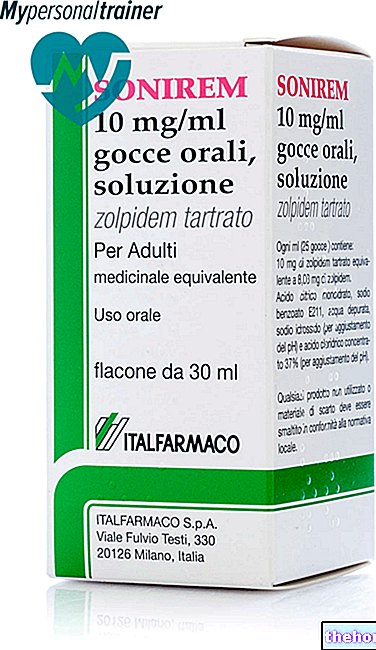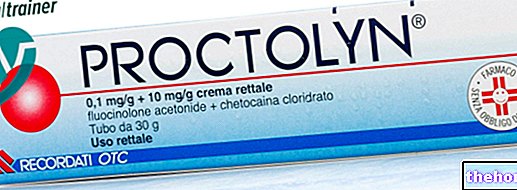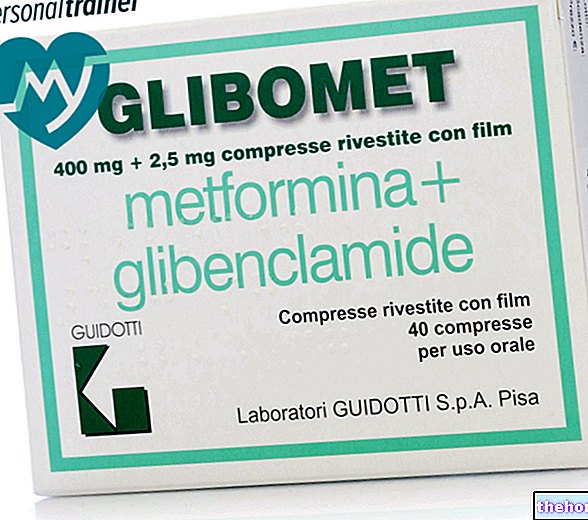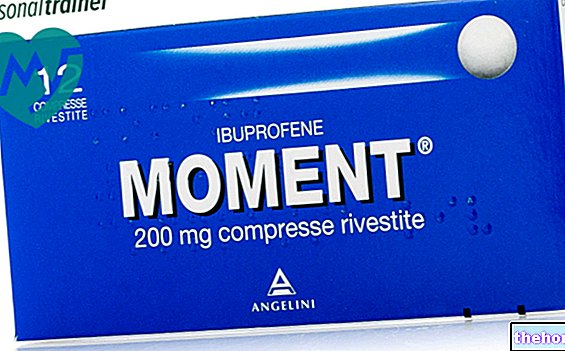Active ingredients: Finasteride
FINASTID 5 mg film-coated tablets
Indications Why is Finastid used? What is it for?
PHARMACOTHERAPEUTIC CATEGORY
FINASTID is an inhibitor of the enzyme converting testosterone to dihydrotestosterone (5-reductase Type II).
THERAPEUTIC INDICATIONS
FINASTID is indicated for the treatment and control of benign prostatic hyperplasia (BPH) also called prostatic hypertrophy, as it induces the regression of prostatic enlargement, improves urinary flow and symptoms associated with BPH.
Contraindications When Finastid should not be used
FINASTID is not intended for use in women and children.
FINASTID must not be used:
- in people hypersensitive to the active substance or to any of the excipients;
- pregnancy; women who are or potentially may be pregnant (see "Precautions for use", "Exposure to finasteride - Risk to a male fetus", "Pregnancy and Lactation").
Precautions for use What you need to know before taking Finastid
Tell your doctor about any current or past illness or medical problem or any allergy.
It is important that the physician be informed if the patient has residual urine volume and / or severely reduced urine flow.
Although BPH is not a malignant tumor, nor can it become malignant, the two conditions can coexist. Only the doctor can assess the symptoms and possible causes.
Effects on PSA (prostate specific antigen) and prostate cancer
When the doctor evaluates the laboratory values of PSA (an indicator of the possible presence of prostate cancer) in typical patients treated with FINASTID for 6 months or more, he should take into account that its concentrations in the blood decrease by approximately 50% and stabilize at a new baseline. Therefore, the PSA value must be doubled for a correct comparison with the normal range in men not treated with FINASTID.
Finasteride Exposure - Risk to a Male Fetus
FINASTID is indicated for the treatment of BPH, a disease that occurs only in men. Women who are or potentially may be pregnant should not come into contact with crumbled or broken FINASTID tablets, as possible absorption of the active substance of FINASTID could interfere with the normal development of a male baby in the mother's womb FINASTID whole tablets have a coating that prevents contact with the active ingredient during normal manual contact, as long as the tablets have not been crumbled or broken.
Pediatric use
FINASTID is not intended for pediatric use. Safety and efficacy in children have not been established.
Interactions Which drugs or foods may change the effect of Finastid
Tell your doctor or pharmacist if you have recently taken any other medicines, even those without a prescription.
No drug interactions of clinical importance have been identified. Finasteride is metabolised essentially, however, it does not appear to significantly interfere with the latter via the cytochrome P450 3A4 system. Although the risk of finasteride modifying the pharmacokinetics of other drugs is believed to be low, inhibitors are likely and inducers of cytochrome P450 3A4 will alter the plasma concentration of finasteride. However, based on established safety margins, any increase due to concomitant use of these inhibitors is unlikely to be of clinical relevance.
FINASTID does not appear to have a significant effect on the drug metabolizing enzyme system linked to cytochrome P450.
The substances studied in humans include propranolol, digoxin, glibenclamide, warfarin, theophylline, and phenazone and no clinically significant interactions were found.
Warnings It is important to know that:
Pregnancy and breastfeeding
Ask your doctor or pharmacist for advice before taking any medicine.
Pregnancy
If the patient's sexual partner is or may be pregnant, the patient should avoid exposing her to his own semen which may contain minimal amounts of the drug. FINASTID must not be used in women who are or potentially may be pregnant (see "Contraindications").
Feeding time
FINASTID is not indicated for use in women. It is not known whether finasteride is excreted in human milk.
Effects on ability to drive and use machines
There are no data suggesting that FINASTID affects the ability to drive or use machines.
Important information about some of the ingredients of FINASTID
FINASTID contains lactose. Patients intolerant to some sugars should contact their doctor before taking this drug.
Hepatic insufficiency
The effect of hepatic insufficiency on the pharmacokinetics of finasteride has not been studied.
Dose, Method and Time of Administration How to use Finastid: Posology
The recommended dosage is one 5 mg tablet per day, with or without meals.
Your doctor may prescribe FINASTID along with another medicine, doxazosin, to improve the control of prostatic hypertrophy.
Although early improvement may be observed, it may be necessary to take FINASTID for at least six months to determine if a favorable response has been obtained.
Dosage in renal insufficiency
In patients with varying degrees of renal impairment (creatinine clearance decreases up to 9 mL / min) no dosage adjustments are required as pharmacokinetic studies have not indicated any changes in the distribution of finasteride.
Dosage in the elderly
Although pharmacokinetic studies have indicated that finasteride elimination decreases slightly in patients over 70 years of age, no dosage adjustment is required.
Overdose What to do if you have taken too much Finastid
In case of accidental ingestion of an excessive dose of FINASTID, notify your doctor immediately or go to the nearest hospital.
Patients received single doses of FINASTID up to 400 mg and multiple doses of FINASTID up to 80 mg / day for three months with no adverse effects.
No specific treatment is recommended in case of overdose with FINASTID.
If you take too many tablets contact your doctor immediately.
If you have any questions about the use of FINASTID, ask your doctor or pharmacist.
Side Effects What are the side effects of Finastid
Like all medicines, FINASTID can cause side effects, although not everybody gets them.
Impotence and decreased libido are the most frequent adverse reactions. These adverse reactions occur early in therapy and resolve during the course of therapy in most patients.
The table below lists the adverse reactions reported in clinical trials and / or postmarketing use.
The frequency of adverse reactions is defined as follows:
Very common (≥1 / 10), Common (≥1 / 100 to <1/10), Uncommon (≥1 / 1,000 to <1/100), Rare (≥1 / 10,000 to <1 / 1,000), Very rare (<1 / 10,000), Not known (cannot be estimated from the available data).
The frequency or causal relationship of adverse reactions reported during post-marketing use with finasteride at lower doses cannot be determined as they are derived from spontaneous reports.
Medical Therapy Of Prostatic Symptoms (MTOPS)
The MTOPS study compared finasteride 5 mg / day (n = 768), doxazosin 4 or 8 mg / day (n = 756), combination of finasteride 5 mg / day and doxazosin 4 or 8 mg / day (n = 786), and placebo (n = 737). In this study, the safety and tolerability profile of the combination therapy was generally consistent with the profiles of the individual components of the combination therapy. The incidence of ejaculation disorders in patients treated with the combination was comparable to the sum of the incidences of this adverse experience for the two monotherapies.
Other long-term data
Prostate cancer was detected in 803 (18.4%) of men treated with FINASTID in a 7-year, placebo-controlled clinical study enrolling 18,882 healthy men, 9,060 of whom with needle biopsy data available for analysis. and in 1,147 (24.4%) of the men treated with placebo. In the FINASTID group, 280 (6.4%) men had prostate cancer with a Gleason score of 7-10 detected at needle biopsy vs 237 (5.1 %) men in the placebo group. Further analyzes suggest that the increased prevalence of high grade prostate cancer observed in the FINASTID group may be explained by a bias in identification due to the effect of FINASTID on prostate volume. Of the total prostate cancer cases diagnosed in this study, approximately 98% were classified as intracapsular (clinical stage T1 or T2) at the time of diagnosis. The clinical relevance of the Gleason 7-10 score data is unknown. .
Lab test
When measuring PSA levels it should be borne in mind that PSA levels have decreased during treatment with FINASTID (see "Precautions for use").
You must promptly report any changes in breast tissue such as swelling, pain, gynaecomastia or nipple discharge to your doctor as these may be signs of a serious condition such as breast cancer.
Compliance with the instructions contained in the package leaflet reduces the risk of undesirable effects.
If any of the side effects gets serious, or if you notice any side effects not listed in this leaflet, please inform your doctor or pharmacist.
Expiry and Retention
Expiry: see the expiry date printed on the package.
The expiry date refers to the product in intact packaging, correctly stored.
Warning: do not use the medicine after the expiry date shown on the package.
No special storage precautions.
Medicines should not be disposed of via wastewater or household waste. Ask your pharmacist how to dispose of medicines you no longer use. This will help protect the environment.
KEEP OUT OF THE SIGHT AND REACH OF CHILDREN
Other information
COMPOSITION
Each FINASTID tablet contains:
- Active ingredient: 5 mg of finasteride.
- Excipients: lactose monohydrate, pregelatinised starch, sodium carboxymethyl starch, yellow iron oxide, sodium dioctyl sulfosuccinate, microcrystalline cellulose, magnesium stearate, hypromellose, hydroxypropyl cellulose, titanium dioxide, talc, E 132 indigo carmine on aluminum hydrate.
PHARMACEUTICAL FORM AND CONTENT
5 mg film-coated tablets (packs of 15 and 30 tablets).
Not all pack sizes may be marketed.
Source Package Leaflet: AIFA (Italian Medicines Agency). Content published in January 2016. The information present may not be up-to-date.
To have access to the most up-to-date version, it is advisable to access the AIFA (Italian Medicines Agency) website. Disclaimer and useful information.
01.0 NAME OF THE MEDICINAL PRODUCT
FINASTID 5 MG TABLETS COATED WITH FILM
02.0 QUALITATIVE AND QUANTITATIVE COMPOSITION
Each tablet contains: finasteride 5 mg.
For the full list of excipients, see section 6.1.
03.0 PHARMACEUTICAL FORM
Film-coated tablets.
04.0 CLINICAL INFORMATION
04.1 Therapeutic indications
FINASTID is indicated in the treatment and control of benign prostatic hyperplasia, also called prostatic hypertrophy, as it induces the regression of prostatic enlargement, improves urinary flow and the symptoms associated with benign prostatic hyperplasia.
04.2 Posology and method of administration
The recommended dosage is one 5 mg tablet per day, with or without meals.
FINASTID can be administered alone or with the alpha blocker doxazosin (see 5.1 Pharmacodynamic properties, Clinical Studies).
Although early improvement may be observed, a therapeutic action of at least six months may be necessary to establish whether a favorable response has been obtained.
Dosage in renal insufficiency
In patients with varying degrees of renal insufficiency (reduction of clearance of creatinine up to 9 ml / min) no dosage adjustments are required, since pharmacokinetic studies have not indicated any changes in the distribution of finasteride.
Dosage in the elderly
Although pharmacokinetic studies have indicated that finasteride elimination decreases slightly in patients over 70 years of age, no dosage adjustment is required.
04.3 Contraindications
FINASTID is contraindicated in case of:
• hypersensitivity to the active substance or to any of the excipients
• pregnancy - use in women who are or potentially may be pregnant (see 4.6 Pregnancy and lactation, Finasteride exposure - risk to the male fetus).
04.4 Special warnings and appropriate precautions for use
General
To avoid obstructive complications it is important that patients with considerable residual urine and / or severely reduced urine flow are closely monitored. The possibility of surgery should be considered.
Effects on PSA and prostate cancer detection
No clinical benefit has yet been demonstrated in patients with prostate cancer treated with FINASTID. Patients with BPH and elevated prostate specific antigen (PSA) were monitored in controlled clinical trials with periodic PSA dosing and prostate biopsies. In these BPH studies, FINASTID did not appear to alter the rate of prostate cancer detection, and the overall incidence of prostate cancer was not significantly different in patients treated with FINASTID or placebo.
It is recommended that digital rectal scans as well as other evaluations for prostate cancer be performed in patients prior to initiating treatment with FINASTID and periodically thereafter. Prostate Specific Antigen (PSA) determination in serum is also used for the detection of prostate cancer. Typically a baseline PSA value> 10 ng / ml (Hybritech) suggests further evaluation and suggests considering a biopsy ; for PSA levels between 4 and 10 ng / mL further evaluation is advisable. There is considerable overlap in PSA levels between men with and without prostate cancer. Thus, in men with BPH, PSA values within the normal reference range does not exclude prostate cancer, regardless of treatment with FINASTID. A baseline PSA value
FINASTID causes a decrease in serum PSA concentration of approximately 50% in patients with BPH even in the presence of prostate cancer. This reduction in serum PSA levels in patients with BPH treated with FINASTID should be taken into account when evaluating PSA data and does not rule out concomitant prostate cancer.
This reduction, although it may vary in individual patients, is applicable to the full range of PSA values. Analysis of PSA data on more than 3,000 patients in a 4-year, double-blind, placebo-controlled study. on long-term efficacy and safety of FINASTID (PLESS) confirmed that in typical patients treated with FINASTID for 6 months or more, PSA values should be doubled when compared to the normal range in untreated men.
This adjustment maintains the sensitivity and specificity of the PSA assay, which maintains its ability to detect prostate cancer.
Any persistent increase in serum PSA levels in patients treated with finasteride should be carefully considered, also taking into account the lack of compliance with therapy with FINASTID.
The percentage of free PSA (ratio of free PSA to total PSA) is not significantly decreased by FINASTID. The ratio of free PSA to total PSA remains constant even during treatment with FINASTID. When using the percentage value of free PSA as an aid in the diagnosis of prostate cancer it is not necessary to adjust the value in any way.
Drug / laboratory test interactions
Effect on PSA levels
Serum PSA concentration correlates with patient age and prostate volume, and prostate volume correlates with patient age. When evaluating PSA laboratory values, it should be taken into account that PSA levels decrease in patients treated with FINASTID. A rapid decrease in PSA levels is observed in most patients in the first month of therapy, subsequently PSA levels stabilize to a new baseline value. The post-treatment baseline value is approximately half of the pre-treatment value. Therefore, in typical patients treated with FINASTID for six months or more, PSA values should be doubled when compared to the normal range in untreated men. For clinical interpretation, see 4.4 Special Warnings and Precautions for Use, Effects on PSA and prostate cancer detection.
Breast cancer in men
Breast cancer has been reported in men taking FINASTID in clinical trials and in the post-marketing period. Physicians should instruct their patients to promptly report any changes in breast tissue such as swelling, pain, gynaecomastia or nipple discharge.
Pediatric use
FINASTID is not intended for pediatric use.
Safety and efficacy in children have not been established.
Lactose
The tablet contains lactose monohydrate. Patients with any of the following genetic deficiencies should not take this drug: galactose intolerance, total lactase deficiency or glucose-galactose malabsorption.
Hepatic insufficiency
The effect of hepatic insufficiency on the pharmacokinetics of finasteride has not been studied.
04.5 Interactions with other medicinal products and other forms of interaction
No drug interactions of clinical importance have been identified. Finasteride is metabolised essentially via the cytochrome P450 3A4 system, however it does not appear to significantly interfere with the latter. Although the risk of finasteride modifying the pharmacokinetics of other drugs is believed to be low, inhibitors and inducers of cytochrome P450 3A4 will alter the plasma concentration of finasteride. However, based on established safety margins, any increase due to concomitant use of these inhibitors is unlikely to be of clinical relevance.
FINASTID does not appear to significantly interfere with the cytochrome P450-bound drug metabolising enzyme system.
The substances studied in humans include propranolol, digoxin, glibenclamide, warfarin, theophylline, and phenazone and no clinically significant interactions were found.
04.6 Pregnancy and breastfeeding
Pregnancy
FINASTID is contraindicated in women who are or potentially may be pregnant (see 4.3 Contraindications).
Due to the ability of Type II 5a-reductase inhibitors to inhibit the conversion of testosterone to dihydrotestosterone, these drugs, including finasteride, when administered to a pregnant woman, can cause malformations of the external genitalia in the case of a male fetus.
Exposure to finasteride / Risk to the male fetus
Women should not come into contact with crumbled or broken FINASTID tablets when they are or potentially may be pregnant, due to possible absorption of finasteride and the resulting potential risk to a male fetus (see 4.6 Pregnancy and lactation - Pregnancy). FINASTID tablets have a coating, which prevents contact with the active component during normal manual contact, as long as the tablets have not been crumbled or broken.
Small amounts of finasteride were found in the semen of people taking finasteride 5 mg / day. It is not known whether the male fetus can be exposed to adverse events if the mother is exposed to the semen of a patient being treated with finasteride. When the patient's sexual partner is or may be pregnant, the patient should be advised to minimize exposure of the partner to his own semen.
Feeding time
FINASTID is not indicated for use in women.
It is not known whether finasteride is excreted in human milk.
04.7 Effects on ability to drive and use machines
There are no data suggesting that FINASTID affects the ability to drive or use machines.
04.8 Undesirable effects
Impotence and decreased libido are the most frequent adverse reactions.These adverse reactions occur early in therapy and resolve during the course of therapy in most patients.
The table below lists adverse reactions reported in clinical trials and post-marketing use.
The frequency of adverse reactions is defined as follows: very common (≥1 / 10), common (≥1 / 100,
The frequency or causal relationship of adverse reactions reported during post-marketing use with finasteride at lower doses cannot be determined as they are derived from spontaneous reports.
(*) Persistent sexual dysfunction (decreased libido, erectile dysfunction, and ejaculation disorders) has been reported during post-marketing use after discontinuation of treatment with FINASTID.
Medical Therapy Of Prostatic Symptoms (MTOPS)
The MTOPS study compared finasteride 5 mg / day (n = 768), doxazosin 4 or 8 mg / day (n = 756), combination of finasteride 5 mg / day and doxazosin 4 or 8 mg / day (n = 786), and placebo (n = 737). In this study, the safety and tolerability profile of the combination therapy was generally consistent with the profiles of the individual components of the combination therapy. The incidence of ejaculation disorders in patients treated with the combination was comparable to the sum of the incidences of this adverse experience for the two monotherapies.
Other long-term data
In a 7-year placebo-controlled clinical study enrolling 18,882 healthy men, 9,060 of whom with needle biopsy data available for analysis, prostate cancer was detected in 803 (18.4%) of the men treated with FINASTID and in 1,147 (24.4%) of men treated with placebo. In the FINASTID group, 280 (6.4%) men had prostate cancer with Gleason score of 7-10 at needle biopsy vs 237 (5.1% ) men in the placebo group. Further analyzes suggest that the increased prevalence of high grade prostate cancer observed in the FINASTID group may be explained by a bias in identification due to the effect of FINASTID on prostate volume. Of the total prostate cancer cases diagnosed in this study, approximately 98% were classified as intracapsular (clinical stage T1 or T2) at the time of diagnosis. The clinical relevance of the Gleason 7-10 score data is unknown. .
Lab test
When measuring PSA levels it should be noted that PSA levels are decreased during treatment with FINASTID (see 4.4 Special warnings and precautions for use).
04.9 Overdose
Patients received single doses of FINASTID up to 400 mg and multiple doses of FINASTID up to 80 mg / day for three months with no adverse effects.
In case of overdose with FINASTID no specific treatment is recommended.
05.0 PHARMACOLOGICAL PROPERTIES
05.1 Pharmacodynamic properties
Therapeutic drug category: testosterone-5-alpha-reductase inhibitors.
ATC code: G04CB01
Finasteride is described chemically: N- (1,1-dimethylethyl) -3-oxo-4-aza-5alpha-androst-1-ene-17 beta carboxamide. It is a white crystalline substance freely soluble in chloroform and lower alcohols, but practically insoluble in water.
Finasteride is a competitive inhibitor of Type II 5a-reductase, with which it slowly forms a stable enzyme complex. Type II 5a-reductase is an intracellular enzyme that metabolizes testosterone into a more potent androgen, dihydrotestosterone (DHT). The turnover of this complex is extremely slow (t½? 30 days). In vitro and in vivo, finasteride has been shown to be a specific inhibitor for Type II 5a-reductase and has no affinity for androgen receptors.
The development and enlargement of the prostate gland, and subsequently of BPH, depends on the potent androgen DHT. Testosterone, secreted by the testes and adrenal glands, is rapidly converted into DHT by Type II 5a-reductase especially in the prostate gland, liver and in the skin where it is preferentially bound to the cell nuclei of those tissues.
A single 5 mg dose of finasteride caused a rapid decrease in serum DHT concentration, with the maximum effect observed after 8 hours. While finasteride plasma levels vary over the course of 24 hours, serum DHT levels during this period remain constant, which means that plasma drug concentrations do not correlate directly with those of DHT. In patients with BPH, administration of finasteride for 4 years at a dose of 5 mg / day has been shown to reduce circulating concentrations of DHT by about 70%, and was associated with a median reduction in prostate volume of about 20%. In addition, PSA was reduced by about 50% from baseline, suggesting a reduction in prostate growth. prostate epithelial cells. In studies up to 4 years, suppression of DHT levels and regression of the hyperplastic prostate associated with decreased PSA levels. In these studies, circulating testosterone levels increased by approximately 10-20%, still remaining within physiological values.
When FINASTID was given for 7-10 days to patients waiting to undergo prostatectomy, the drug caused an approximately 80% decrease in intraprostatic DHT. Intraprostatic testosterone concentrations were increased up to 10-fold beyond levels. pre-treatment.
In healthy volunteers treated with FINASTID for 14 days, the DHT values returned to pre-treatment levels in approximately 2 weeks upon discontinuation of therapy. In patients treated for 3 months, the prostate volume, which decreased by about 20%, returned close to baseline after about 3 months after discontinuation of therapy.
Finasteride had no effect, compared to placebo, on circulating levels of cortisol, estradiol, prolactin, thyrotropic hormone or thyroxine. No clinically significant effects were observed on plasma lipid profile (e.g., total cholesterol, low density lipoprotein, high density lipoprotein and triglycerides) or bone mineral density.
In patients treated for 12 months, an increase of about 15% of luteinizing hormone (LH) and about 9% of follicle-stimulating hormone (FSH) was observed; however these levels remained well within physiological values. Levels of LH and FSH following stimulation with gonadotropin-releasing hormone (GnRH) were not altered, indicating that pituitary-gonadal axis control was not affected. Following treatment with FINASTID for 24 weeks of healthy male volunteers to evaluate semen parameters, there was no clinically significant effect on sperm concentration, motility, morphology, or sperm pH. A median decrease in ejaculate volume of 0.6 ml was observed, with a concomitant reduction in the total sperm per ejaculate. These parameters remained within the normal range. range and were reversible upon discontinuation of therapy.
Finasteride has been shown to inhibit the metabolism of steroids C19 and C21 thus showing an inhibitory effect on both hepatic and peripheral activity of Type II 5a-reductase.
Clinical Studies
FINASTID Long-Term Efficacy and Safety Study (PLESS)
PLESS is a multicentre, double-blind, randomized, placebo-controlled, 4-year study conducted to evaluate the effect of FINASTID therapy on BPH symptoms and related urological events (surgery and acute urinary retention). [RUA]) involving 3,040 patients (45-78 years) with moderate to severe symptoms of BPH and enlarged prostate on digital rectal examination. The study was completed by 1,883 patients (finasteride n = 1000; placebo n = 883).
In the PLESS study, surgery or acute urinary retention occurred in 13.2% of patients taking placebo compared to 6.6% of patients on FINASTID (51% risk reduction). FINASTID reduced the risk of surgery by 55% (10.1% for placebo vs 4.6% for FINASTID) and urinary retention of 57% (6.6% for placebo vs 2.8% for FINASTID).
FINASTID improved the symptom score by 3.3 points compared to 1.3 points in the placebo group (p
Medical Therapy Of Prostatic Symptoms (MTOPS)
MTOPS is a four to six year study in which 3,047 men with symptomatic BPH were randomized to treatment with finasteride 5 mg / day, doxazosin 4 or 8 mg / day, combination of finasteride 5 mg / day and doxazosin 4 o 8 mg / day, or placebo. Compared to placebo, treatment with finasteride, doxazosin, or combination therapy resulted in a significant reduction in the risk of clinical progression of BPH (defined by: increase in symptom score from baseline of ≥ 4 points, urinary retention, BPH-related renal failure, recurrent urinary or urosepsis infections, incontinence) of 34, 39, and 67%, respectively.
Most of the events (274 out of 351) that constituted BPH progression were confirmed increases in symptom score ≥ 4; the risk of progression was reduced by 30, 46 and 64% in the finasteride, doxazosin and combination therapy groups, respectively, compared to placebo. Acute urinary retention accounted for 41 out of 351 BPH progression events; the risk of developing acute urinary retention was reduced by 67, 31, and 79% in the finasteride, doxazosin, and combination therapy groups, respectively, compared to placebo.
Further clinical studies
The urodynamic effects of finasteride in the treatment of bladder outflow obstruction due to BPH were evaluated using invasive techniques in a 24-week, double-blind, placebo-controlled study of 36 patients with moderate to severe symptoms of urinary obstruction. and a maximum flow rate of less than 15 ml / sec. In patients treated with 5 mg of FINASTID, a decrease in obstruction was demonstrated compared to placebo, evidenced by a significant improvement in detrusor pressure and an increase in the mean rate of flow.
In a double-blind, placebo-controlled, one-year study, the effects of finasteride on the volume of the peripheral and periurethral areas of the prostate were evaluated by MRI in 20 men with BPH. Patients treated with FINASTID, but not those treated with placebo, showed a significant decrease [11.5 ± 3.2 cc (SE)] in gland size in full, largely attributable to a reduction [6.2 ± 3 cc] in the size of the periurethral area. Since the periurethral zone is responsible for the outflow obstruction, this reduction may explain the favorable clinical response observed in these patients.
In a 7-year placebo-controlled clinical study enrolling 18,882 healthy men ≥55 years of age with normal digital rectal findings and PSA ≤ 3.0 ng / mL, 9,060 of whom with needle biopsy data available for analysis, prostate cancer was detected in 803 (18.4%) of the men treated with FINASTID and in 1,147 (24.4%) of the men treated with placebo. In the FINASTID group, 280 (6.4%) men had cancer. prostate with a Gleason score of 7-10 detected at needle biopsy vs 237 (5.1%) men in the placebo group. Additional data suggest that the increased prevalence of high-grade prostate cancer observed in the FINASTID-treated group may be explained by a bias in identification (detection bias) due to the effect of FINASTID on prostate volume. Of the total prostate cancer cases diagnosed in this study, approximately 98% were classified as intracapsular (clinical stage T1 or T2) at the time of diagnosis. The clinical relevance of the Gleason 7-10 score data is unknown.
This information may be of some relevance to men undergoing treatment with FINASTID for BPH. FINASTID has no indication for reducing the risk of prostate cancer.
05.2 Pharmacokinetic properties
Absorption
The bioavailability of finasteride is approximately 80% and is unaffected by food. Maximum plasma concentrations of finasteride are reached approximately 2 hours after administration and absorption is complete after 6-8 hours.
Distribution
After daily administration of 5 mg / day, the equilibrium plasma concentration was 8-10 ng / ml and remained stable over time.
Protein binding is approximately 93% even in patients with renal impairment (creatinine clearance 9 to 55 ml / min).
Finasteride has been found in the cerebrospinal fluid (CSF) of patients treated with a 7-10 day course of finasteride but the drug does not appear to preferentially concentrate at the CSF level. Finasteride has also been found in the semen of subjects treated with FINASTID 5 mg / day. In adult humans, the amount of finasteride in semen was 50 to 100 times lower than the finasteride dose (5 mg) and had no effect on circulating DHT levels (see also 5.3 Preclinical Safety Data - Developmental Toxicity and reproduction).
Biotransformation / Elimination
In humans, following an oral dose of 14C-finasteride, 39% of the dose was excreted in the urine as metabolites (virtually no unchanged drug was excreted in the urine) and 57% of the total dose was excreted with the faeces.
Finasteride exhibits a mean plasma elimination half-life of 6 hours clearance plasma and the volume of distribution of finasteride are approximately 165 ml / min and 76 liters, respectively.
The rate of elimination of finasteride is slightly decreased in the elderly. With advancing age the half-life is prolonged from a mean half-life of about 6 hours in men aged 18-60 to 8 hours in men aged 18-60. over 70 years of age This observation has no clinical significance and therefore, a reduction in dosage is not warranted.
In patients with chronic renal impairment whose clearance creatinine ranged from 9 to 55 mL / min, single dose distribution of 14C-finasteride was not different from that of healthy volunteers. Some of the metabolites that are normally excreted by the kidney was excreted in the faeces. Therefore it appears that faecal excretion increases in proportion to the decrease in urinary excretion of metabolites. No dosage adjustment is necessary in non-dialysis patients with renal impairment.
05.3 Preclinical safety data
Animal toxicology
Non-clinical data reveal no special hazard for humans based on conventional studies of repeated dose toxicity, genotoxicity, and carcinogenic potential.
The oral LD of finasteride in male and female mice is approximately 500 mg / kg. The oral LD of finasteride in male and female rats is approximately 400 and 1,000 mg / kg, respectively.
In a hepatotoxicity test, 40 mg / kg / day of finasteride was administered orally to dogs for 28 days. Venous blood was analyzed for transaminases (SGPT / SGOT). Neither transaminase was elevated, showing that finasteride did not cause liver damage.
Furthermore, no important changes in renal, gastric and respiratory functions were observed with finasteride in dogs or in the cardiovascular system in dogs and rats.
In a study lasting 24 months, no evidence of a carcinogenic effect was observed in rats receiving finasteride doses up to 320 mg / kg / day (3,200 times the recommended human dose of 5 mg / day).
No evidence of mutagenicity was observed in one test in vitro bacterial mutagenesis, a mammalian cell mutagenesis test, or an alkaline elution test in vitro.
Development and Reproduction Toxicity
Reproductive toxicology studies in male rats demonstrated a reduction in the weight of the prostate and seminal vesicles, reduced secretion from accessory genital glands and a reduction in the fertility index (caused by the primary pharmacological effect of finasteride). The clinical relevance of these data is unclear.
As with other 5 alpha-reductase inhibitors, feminization of fetuses from male rats was observed with administration of finasteride in the gestation period.
The intrauterine effects of exposure to finasteride during embryo-fetal development were evaluated in the rhesus monkey (gestation period 20 - 100 days), an animal species more similar to humans than the rat and rabbit, although it concerns intrauterine development.
Intravenous administration of finasteride to pregnant rhesus monkeys at dosages up to 800 ng / day throughout the entire period of embryonic and fetal development did not result in abnormalities in male fetuses. This dosage is approximately 60-120 times the estimated amount present in the semen of a man who has taken finasteride 5 mg, and to which a woman could be exposed via semen. Confirming the relevance of the rhesus model for the development of the human fetus, oral administration of finasteride 2 mg / kg / day (systemic exposure (AUC) of monkeys was slightly (3x) higher than that of humans who took finasteride 5 mg, or approximately 1 million times the estimated amount of finasteride present in semen) in monkeys in pregnancy it gave rise to abnormalities of the external genitalia of male fetuses. No other abnormalities were observed in male fetuses and no finasteride-related abnormalities were observed in female fetuses for any of the dosages used.
06.0 PHARMACEUTICAL INFORMATION
06.1 Excipients
Lactose monohydrate, pregelatinized starch, sodium carboxymethyl starch, yellow iron oxide, sodium dioctyl sulfosuccinate, microcrystalline cellulose, magnesium stearate, hypromellose, hydroxypropyl cellulose, titanium dioxide, talc, E132 indigo carmine on aluminum hydrate.
06.2 Incompatibility
Incompatibilities with other medicines are unknown.
06.3 Period of validity
3 years.
06.4 Special precautions for storage
This medicine does not require any special storage conditions.
06.5 Nature of the immediate packaging and contents of the package
The tablets are contained in opaque PVC / PE / PVDC and aluminum blisters. The blister is contained with the package leaflet in a lithographed cardboard box.
15 film-coated tablets of 5 mg
30 film-coated tablets of 5 mg
Not all pack sizes may be marketed.
06.6 Instructions for use and handling
No special instructions.
Unused medicine and waste derived from this medicine must be disposed of in accordance with local regulations.
07.0 MARKETING AUTHORIZATION HOLDER
NEOPHARMED GENTILI S.r.l.
Via San Giuseppe Cottolengo, 15 - 20143 Milan
08.0 MARKETING AUTHORIZATION NUMBER
AIC n. 028309019 - 15 film-coated tablets 5 mg
AIC n. 028309021 - 30 film-coated tablets 5 mg
09.0 DATE OF FIRST AUTHORIZATION OR RENEWAL OF THE AUTHORIZATION
July 2002
10.0 DATE OF REVISION OF THE TEXT
January 2013




























